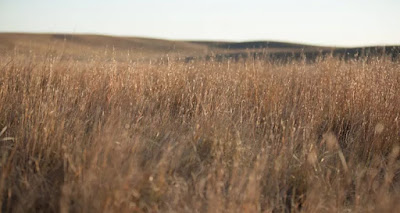By Nick Mathews, Missouri School of Journalism
For the
Columbia Missourian Last week witnessed two significant, contrasting news organization transactions, originating from opposite corners of the United States and forging divergent paths for their respective communities and the future of the local news industry.
In Southern California, Patrick Soon-Shiong sold
The San Diego Union-Tribune to an affiliate of the
MediaNews Group, which is owned by
Alden Global Capital. Shortly after the announcement, the New York-based hedge fund of Alden, the second largest newspaper publisher in the United States, announced buyouts and likely staff reductions at the Union-Tribune. The atmosphere was thick with uncertainty, casting a somber cloud over the news organization, its employees and the local community in San Diego.
 |
| Reade Brower |
In Maine, Reade Brower sold
Masthead Maine, the state’s largest newspaper group with five daily newspapers and 17 weekly newspapers, to the
National Trust for Local News. The nonprofit, which started in 2021 with the steadfast goal of safeguarding local ownership for news organizations, collaborated with the
Maine Journalism Foundation on the purchase. Shortly after the announcement, Masthead Maine publisher Lisa DeSisto said that her team will continue as custodians of the newspapers, assured that there will be no impending employee losses and provided a sense of stability within the entire organization and state.
We should celebrate the victory for Maine and mourn the loss for San Diego.
In my research, I explore the de-localization of the news industry, wherein the essence of “local” is stripped away from local news organizations. Through ownership transfers, corporate mergers and hedge-fund takeovers, these organizations too often face consolidation, dismantling and closures. In short, when local ownership is replaced by larger absentee corporations solely driven by financial gains, the vital connection between the news organization and the community is severed. Readers feel detached, amplifying the pervasive nature of the deteriorating local news segment, which continues to experience its worst year every passing year.
Many scholars, including myself, advocate for the merits of local ownership, which prevailed for generations until about the 1980s. A local owner brings invaluable benefits to a community. These owners are attuned to the social and informational needs of the community, understanding the pulse of the community firsthand. They perceive their organizations as vital local institutions, not just commercial enterprises. For the best of local owners, their primary mission is to serve and support their communities, with financial profits taking a backseat to a more noble cause.
Today, the local news landscape has dramatically shifted, with less than one-third of the nation’s 5,000 weekly newspapers and a mere 10 of the 100 largest circulation daily newspapers maintaining their independence, according to a team of researchers at
Northwestern University. The top six largest newspaper corporations in the U.S. have partial or full ownership by financial firms. This transition away from local ownership not only deprives communities of their stake in newspapers but also places the destiny of surviving publications in the clutches of a limited number of chains. These hedge funds now wield disproportionate power over the local news landscape, shaping its trajectory, essence and even its very existence.
While local newspaper owners in the past prioritized their readers as customers, hedge funds primarily cater to pension funds, mutual funds and commercial banks. Hedge funds exhibit no concern for a newspaper’s history, its employees or its ties to the community. Their focus is purely on cold, calculated financial gains. To hedge funds, a newspaper organization is treated like any other asset. If it fails to generate sufficient returns, it becomes subject to downsizing, sale or closure. Cost-cutting tactics are evident from the moment of acquisition, as the firms swiftly slash expenses, reduce newsroom staff and strive to boost their bottom lines.
The San Diego Union-Tribune stands as the latest example, showcasing once again why Alden Global Capital has earned the moniker of “the grim reaper of American newspapers,” as aptly described by
Vanity Fair. As readers, as citizens, as society at large, we should wholeheartedly look to Maine, the land of lighthouses, to serve as the guiding light, illuminating a desired path for the local news scene. The notable example set by Reade Brower, the former owner of Maine Masthead, transcended mere pursuit of profit. With admirable patience, Brower allowed a nonprofit collaboration to emerge, orchestrating the purchase of his newspapers and ensuring that the local news remains securely held with the hands of the communities.
Brower’s actions serve as an inspiring model — a local news organization owner who prioritizes journalism, community and readership, even when the time comes to pass the torch. Owners cannot retain ownership indefinitely, obviously. What truly matters is their enduring commitment to the very communities they serve.

























